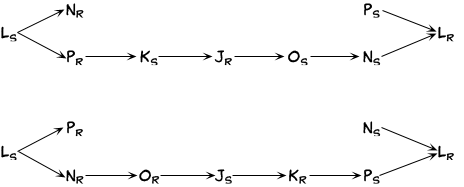Page 1 of 1
PT 34 LG 4??
Posted: Wed Sep 08, 2010 11:57 pm
by bee's vision
Did anybody else struggle with the last game in PT 34? Here's where I got confused:
If L is at S, then both N and P are at R
If N is at R, then so is O
If P is at R, the both K and O are at S
Maybe I am just burnt out but I cannot figure out where O is supposed to be if L is at S. Don't these last two rules contradict each other? What am I missing? Please Help!
P.S. it just occurred to me that maybe it just means that L cannot be at S? Still not sure.
Re: PT 34 LG 4??
Posted: Thu Sep 09, 2010 12:09 am
by Cambridge LSAT
That's correct; L cannot be assigned to S. Since L
S leads to L
R in both chains you can create, L must be assigned to R. This is an uncommon inference for an In/Out Grouping game.

Re: PT 34 LG 4??
Posted: Thu Sep 09, 2010 12:25 am
by 2011Law
Just wanted to say that PT 34 Section 4 (Games) shit all over my existence. Spent 4 minutes on game 1 until I realized I didn't understand any of it. Total for that section: 8 right... fml.
Also, props to Cambridge, that is one baller diagram. I didn't see that paradox when I did it.
Re: PT 34 LG 4??
Posted: Thu Sep 09, 2010 11:33 am
by rossrobert
How do you know when the contrapositive should be flipped and negated vs what was done in this game where the contrapositive if i understand correctly was flipped with their clinics, taken as follows: Js-->Kr Contra: Ks-->Jr
Re: PT 34 LG 4??
Posted: Thu Sep 09, 2010 12:17 pm
by Cambridge LSAT
Generally, when the game involves selecting a number of variables from a larger pool, you should use crossed-out letters or tildes to represent variables not being selected. When the game involves placing each variable into exactly one of two groups, as in this case, subscripts provide a clearer picture of the interactions. You can still use negative notations, but you may find them to be inefficient. For instance, ~JR → KR, is not as informative as JS → KR. The process of creating the contrapositive is the same, but when there are two values, neither one of which is inherently positive or negative, negating a variable with one subscript entails changing that variable's subscript to the other one.
